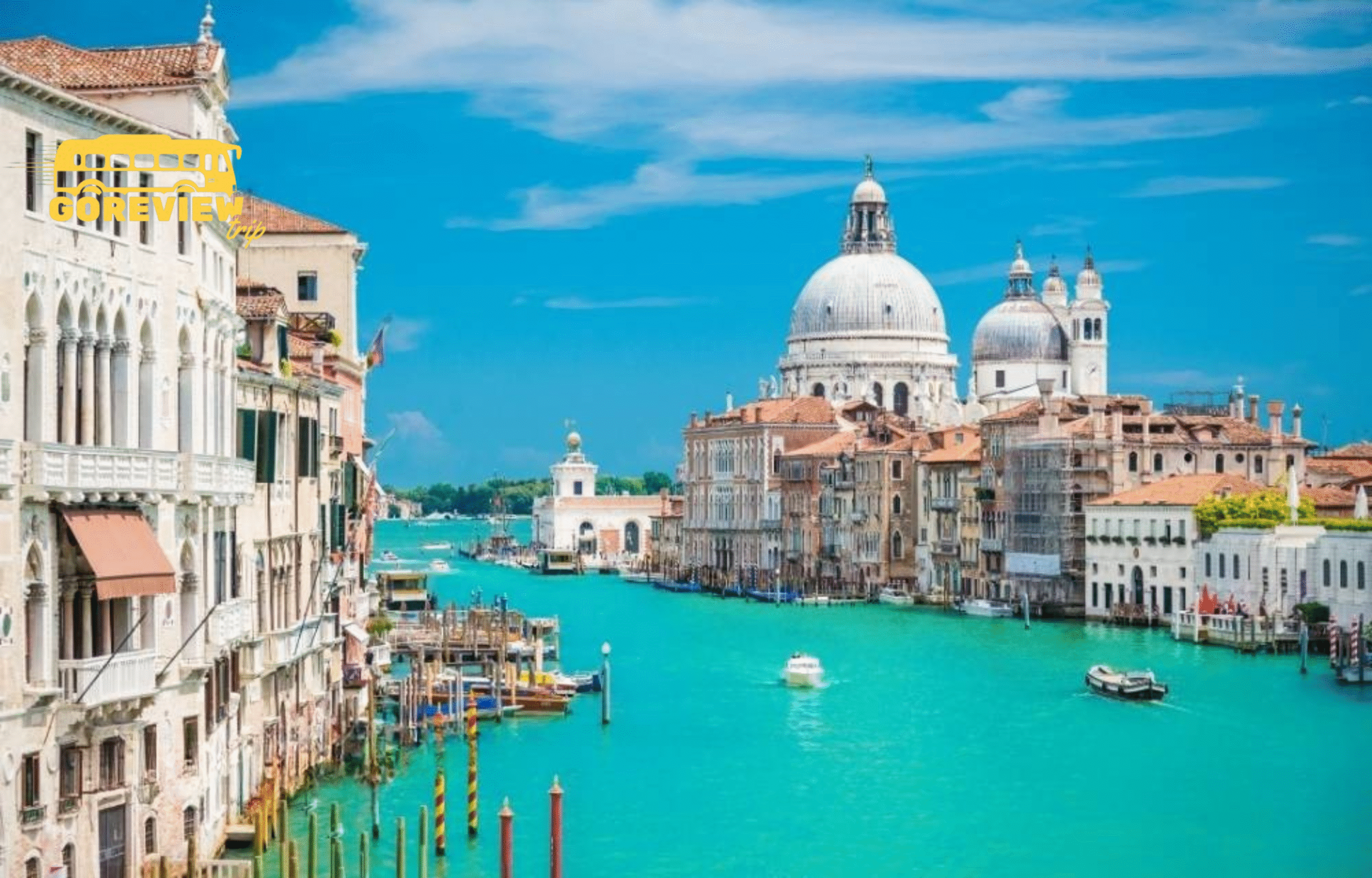Hey, it’s Lyra. The flight confirmation email glowed on my screen: “Your Booking to Rome is Complete.” A jolt of pure joy shot through me. Italy! The dream trip I’d been saving for, a two-week odyssey of pasta, history, and art. I pictured myself wandering through the Colosseum, sipping espresso in a sun-drenched piazza, and ordering gelato with the effortless cool of a local. And that’s when the second jolt hit me—one of pure, unadulterated panic. I didn’t speak a word of Italian. My quest to find the Best Italian language app for travel began at that very moment, fueled by a mix of excitement and a paralyzing fear of being a clueless tourist, pointing and grunting my way through one of the most beautiful cultures on Earth.
I knew I didn’t need to become fluent. I wasn’t writing a novel or debating politics. I just wanted to connect. I wanted to be able to say more than “ciao” and “grazie.” I wanted to order my coffee with confidence, ask for directions without feeling like a burden, and show the Italian people I respected their culture enough to at least try.
But the app store was a jungle. A cacophony of cartoon owls, flashcard systems, and subscription models all screaming for my attention. How could I know which one was right for me, a traveler with a deadline? This blog post is the story of that journey. It’s a deep dive into what makes an app truly useful for a vacationer, and a detailed look at the contenders I tested on my personal quest. So, if you’re dreaming of Italy but are intimidated by the language barrier, come along with me. Let’s find the perfect tool to turn your travel anxiety into eager anticipation.

Table of Contents
1. What Does “Best” Even Mean for a Traveler?
Before I downloaded a single app, I had to stop and think. What was my actual goal? The “best” app for a university student aiming for fluency is very different from the best app for someone who needs to order a train ticket in three months. I realized that for a traveler, the criteria are very specific. I broke it down into five key pillars.
1. Focus on Conversational Skills, Not Just Grammar Rules. Academic apps often get bogged down in complex grammar like the subjunctive mood. While that’s important for fluency, it’s not what you need when you’re trying to ask where the bathroom is. I needed an app that prioritized real-world dialogues. I wanted to learn phrases I would actually use, like “Un tavolo per due, per favore” (A table for two, please) or “Quanto costa?” (How much does it cost?).
2. Practical, Travel-Centric Vocabulary. My vocabulary needs were specific. I didn’t need to learn the words for “elephant” or “scientist.” I needed words for “train station,” “ticket,” “check, please,” “delicious,” and “I’m allergic to nuts.” The app had to be smart enough to categorize its lessons around travel scenarios: checking into a hotel, dining out, shopping, and asking for directions.
3. The Power of Listening and Pronunciation. One of my biggest fears was mispronouncing something so badly I wouldn’t be understood. Italian is a beautifully phonetic language, but getting the accent and rhythm right is key. I knew I needed an app with high-quality audio from native speakers. A feature to record my own voice and compare it to the native speaker’s would be a huge bonus, helping me build the confidence to actually speak the words out loud.
4. Offline Accessibility is Non-Negotiable. This was a big one. I couldn’t rely on having perfect Wi-Fi or using expensive international data every time I needed to look up a word. Imagine being stuck in a train station with no signal and no way to ask which platform to go to. A great travel app must have robust offline capabilities, allowing me to download lessons, phrasebooks, and vocabulary lists in advance.
5. Motivation and Ease of Use. Let’s be honest: learning a language is hard work. If an app felt like a chore, I knew I would abandon it after a week. It needed to be engaging, easy to navigate, and make me want to come back every day. Whether through gamification, short lesson formats, or a beautiful user interface, the user experience was paramount.
With these five pillars as my guide, I was ready to enter the app jungle and start my hunt.
2. The Contenders – My Personal App Test Drive

I decided to immerse myself in four of the most popular and highly-rated apps, giving each a fair shot to win the title of the Best Italian language app for travel in my book.
Duolingo: The Gamified Gateway
- The Experience: Duolingo was the first app I tried. Its friendly green owl, Duo, is famous for a reason. The app is incredibly fun and addictive. It turns language learning into a game, with points, streaks, and leaderboards. The short, bite-sized lessons were perfect for squeezing in a few minutes of practice while waiting in line or on a short break. It was fantastic for building a foundational vocabulary base.
- Strengths for Travel:
- Motivation: The gamification is brilliant. The desire to maintain my “streak” kept me coming back every single day.
- Basic Vocabulary: I quickly learned hundreds of basic words for objects, foods, and animals.
- Free Version: The free version is very robust, making it accessible to everyone.
- Weaknesses for Travel:
- Odd Phrasing: This was my biggest issue. I spent a lot of time learning sentences like “The bear drinks beer” or “My cat wears a red hat.” While amusing, these weren’t practical for my trip. I found myself craving more realistic dialogues.
- Lack of Conversational Depth: Duolingo is great for vocabulary and sentence structure, but it didn’t give me much confidence in having an actual back-and-forth conversation. The computer-generated voice also lacks the nuance of a real human.
- Traveler’s Verdict: Duolingo is a fantastic starting point. It’s a fun, low-pressure way to build a vocabulary base and get into the daily habit of learning. However, I wouldn’t rely on it alone to prepare for real-world conversations in Italy. It’s an excellent supplement, but probably not the single Best Italian language app for travel.
Babbel: The Practical Conversation Builder
- The Experience: If Duolingo is a game, Babbel is a well-structured digital classroom. From the very first lesson, the difference in approach was clear. Babbel’s lessons are built around realistic dialogues. For example, a lesson on greetings would be a full conversation between two people introducing themselves. You learn words and phrases within the context of how they are actually used.
- Strengths for Travel:
- Real-World Dialogues: This is Babbel’s superpower. I learned how to introduce myself, order a coffee, ask for the bill, and talk about where I was from. The content felt immediately useful.
- Cultural Tips: Babbel often includes little notes about Italian culture, which I loved. It helped me understand the context behind the language.
- Review System: The app uses spaced repetition to bring back words and phrases you’ve learned before they slip from your memory. This was incredibly effective.
- Speech Recognition: The tool for practicing pronunciation was good, helping me fine-tune my accent.
- Weaknesses for Travel:
- Subscription-Based: Unlike Duolingo, you really need a subscription to get the most out of Babbel. The first lesson is free, but after that, you have to pay.
- Less “Fun”: It feels more like studying than a game. This isn’t necessarily a bad thing, but it requires a bit more self-discipline to keep up with.
- Traveler’s Verdict: Babbel felt like a massive step up in terms of travel readiness. The focus on practical conversation was exactly what I was looking for. After a few weeks with Babbel, I could actually imagine myself stringing sentences together in a real cafe. It’s a very strong contender for the best Italian language app for travel.
Pimsleur: The Audio Apprentice
- The Experience: Pimsleur is completely different from the others. It’s almost entirely audio-based. Each lesson is a 30-minute audio track that you are meant to listen to and participate in. It’s based on the principle of listen-and-repeat, gradually introducing new words and weaving them into the phrases you’ve already learned. I did my Pimsleur lessons during my daily commute.
- Strengths for Travel:
- Authentic Pronunciation: By constantly hearing and repeating after native speakers, my accent improved dramatically. I learned the rhythm and music of the Italian language in a way that screen-based apps couldn’t teach me.
- Thinking on Your Feet: The lessons prompt you to recall phrases from memory, which simulates a real conversation. It trains your brain to think in Italian, rather than just translating in your head.
- Hands-Free Learning: The ability to learn while driving, walking, or doing chores is a huge advantage for busy people.
- Weaknesses for Travel:
- No Visuals: It’s not great for visual learners, as there’s very little reading or writing involved. You won’t learn how to spell words as effectively.
- Pacing: The 30-minute lessons are a set length, so you can’t just do a quick 5-minute session. It requires a dedicated time slot.
- Cost: Pimsleur is a premium product and is one of the more expensive options.
- Traveler’s Verdict: Pimsleur was my secret weapon for building conversational confidence. It made me feel less like I was “reading” Italian and more like I was actually “speaking” it. For travelers who are auditory learners or want to perfect their accent before their trip, Pimsleur is an outstanding choice.
Memrise: The Real-World Connector
- The Experience: Memrise strikes a fascinating balance between the gamification of Duolingo and the practicality of Babbel, with a unique twist. Its standout feature is “Learn with Locals,” a library of thousands of short video clips of native speakers saying different words and phrases.
- Strengths for Travel:
- Authenticity: Seeing real people with different accents and mannerisms say the phrases you’re learning is invaluable. It prepares you for how the language actually sounds on the streets of Naples or Florence, not just in a recording studio.
- Visual Learning: The combination of flashcards, videos, and different testing modes caters to various learning styles.
- User-Generated Content: Beyond the official courses, there are thousands of user-created courses on specific topics, like “Italian Wine Vocabulary” or “Italian Art History Terms.”
- Weaknesses for Travel:
- Less Structured: While fun, the learning path can feel a bit less structured than Babbel or Pimsleur. It can sometimes feel like you’re learning lists of vocabulary rather than building conversational blocks.
- Quality Varies: The quality of the user-generated courses can be inconsistent.
- Traveler’s Verdict: Memrise was the app that made the language feel most alive. The video clips were a game-changer, bridging the gap between textbook learning and real-world interaction. It was an excellent tool for tuning my ear to the language as it’s spoken by everyday people.
3. The Verdict – My “Travel-Ready” App Combination

After weeks of testing, I came to a crucial realization. My hunt for the single Best Italian language app for travel was slightly misguided. The truth is, the most effective approach wasn’t to pick one winner, but to create a personalized “dream team” of apps that complemented each other’s strengths and made up for each other’s weaknesses.
My winning combination was a trifecta:
- Pimsleur as the Foundation: I used its 30-minute audio lessons during my commute. This built the core of my listening and speaking skills. It gave me the confidence in my pronunciation that I desperately needed.
- Babbel as the “Textbook”: I dedicated 15-20 minutes each evening to Babbel’s dialogue-based lessons. This is where I learned the “why” behind the language, practiced sentence structure, and learned the specific phrases I knew I would need for hotels, restaurants, and shops.
- Duolingo as the “Snack”: I used Duolingo for quick, 5-minute vocabulary drills throughout the day. It was the fun, gamified way to keep my brain engaged with Italian and reinforce the words I was learning in the other apps, especially when I only had a few moments to spare.
This combination covered all my bases: auditory learning, practical conversation, and vocabulary reinforcement. I wasn’t just learning a language; I was immersing myself in it from multiple angles.
4. Beyond the Screen – Making the Language Real
An app is a tool, not a magic wand. The final, and most important, step in my preparation was to take the knowledge from the screen and bring it into the real world, even before I left home.
I Talked to Myself. A Lot. It feels silly at first, but it works. I would narrate my actions in Italian. “Prendo il caffè” (I’m having coffee). “Apro la porta” (I’m opening the door). I practiced the dialogues from Babbel out loud. This act of physically speaking the words builds muscle memory and makes it much less intimidating to do so in front of a real person.
The Power of Politeness I focused on mastering the “polite” phrases first: Per favore (Please), Grazie (Thank you), Prego (You’re welcome), Buongiorno (Good morning), Buonasera (Good evening), and Mi scusi (Excuse me). I learned that just using these simple words with a smile could transform an interaction. It shows respect and effort, and I found that Italians were incredibly warm and appreciative in return.
Embracing Imperfection The most important lesson was to let go of the fear of making mistakes. I knew I would mess up. On my second day in Rome, I confidently tried to ask a shopkeeper for a bag (una borsa) but accidentally asked for a stock market exchange (una borsa). He looked confused for a second, then smiled, realized what I meant, and we both had a good laugh. That moment was liberating. I had made a mistake, the world didn’t end, and we connected through a shared moment of humor. My imperfect Italian was infinitely better than no Italian at all.
Conclusion: The Real Answer
My trip to Italy was everything I had dreamed of and more. And I can say with 100% certainty that the effort I put into learning the language beforehand amplified the experience tenfold. Those small conversations—ordering wine from a waiter and discussing his recommendation, asking a nonna for directions and getting a passionate, ten-minute explanation, successfully buying train tickets to Florence—became some of my most cherished memories.
So, what is the Best Italian language app for travel?
The real answer is that it’s the one (or the combination) that gets you to stop worrying and start speaking. It’s the one that fits your learning style and keeps you motivated. For me, the Pimsleur-Babbel-Duolingo trifecta was the perfect recipe for success. For you, it might be the real-world videos of Memrise or another app entirely.
Don’t search for a magic bullet. Instead, search for a tool that empowers you. Start today, be consistent, practice out loud, and embrace the joy of making mistakes. The connection you’ll forge with the Italian people and their beautiful culture will be the greatest reward of all.
Buon viaggio! (Have a good trip!)





